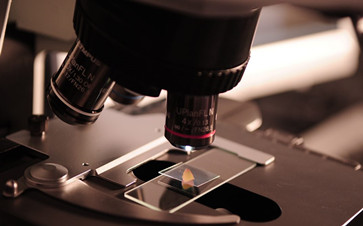We May Be Able to 3D-Print Living Tissue on a Big Scale Soon
Time:2017-10-19 From:

3D printing is one of the highlight topics for the upcoming drupa 2020. That is why in this article we’re focusing on one way 3D printing might revolutionize stem cell medicine.
Scientists at the University of Oxford have developed a new method to 3D-print living tissue and cells that were grown in a laboratory into living structures. Although this new approach has the capability to revolutionize regenerative medicine as we know it, printing high-resolution living tissues is incredibly hard to do.
3D-Printed Cells Need Protection
Since cells are living organisms, they’re most often moving within the printed structures that support them. This can lead to the structures collapsing on themselves. The solution comes from Oxford’s Department of Chemistry where a team led by Professor Hagan Bayley managed to develop a means to produce tissues in cells that can support the structures to remain in shape. By wrapping the cells in protective nanolitre droplets, they can be built into a living structure drop-by-drop. Printing tissue like that improves the survival chances for each cell and thus for the entire tissue.
Printing Cells on a Budget
‘We were aiming to fabricate three-dimensional living tissues that could display the basic behaviours and physiology found in natural organisms. To date, there are limited examples of printed tissues, which have the complex cellular architecture of native tissues. Hence, we focused on designing a high-resolution cell printing platform, from relatively inexpensive components, that could be used to reproducibly produce artificial tissues with appropriate complexity from a range of cells including stem cells,’
says Dr. Alexander Graham, lead author and 3D Bioprinting Scientist at Oxford Synthetic Biology.
3D-Printed Tissue Might Help Against Animal Testing
One possible use for this groundbreaking technology is using it to shape reproducible human tissue models. That way the pharma industry could get rid of animal testing. In case this becomes a success there might be a chance that tissue grown that way could be used as a transplant in actual human tissue.
Now that the foundation is set, the team is going to be looking to further advance the printing technique that comes with it, so they will be able to produce live tissue at an industrial scale in the foreseeable future.
News Source:Blog drupa
Written By drupa Redaktion

